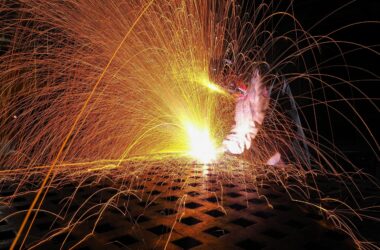The PayPal Mafia is stuff of legend around Silicon Valley—at least, for the first 2 decades of the 21st century. Counted in this group of early employees are a number of entrepreneurs and investors for some major companies during that time: everything from LinkedIn to YouTube to Palantir to Yelp to Affirm1 to Sequoia Capital to Tesla. The outsized impact that this group of people has had on our current technological landscape is remarkable.
Given this professional success and fame, it’s no surprise to see other groups of tech startup employees try their hand at replicating the mythology. In fact, I’ve been a part of 2 such ecosystems, incidentally, both also FinTechs like PayPal:
- Square, founded in 2009 and IPOed by 2015. Notable ex-Square companies include DoorDash, Opendoor, Faire, and Anchorage.
- Affirm, founded in 2012 and IPOed by 2021. It’s a bit early for the ex-Affirm diaspora to become household names yet, but some startups from my former colleagues include Unit21, Settle, SentiLink, and Fractional. I’ve also seen and heard of others who have quit the company recently and are gearing up to do their own thing.
Even if these groups of companies and founders don’t reach the storied heights of the PayPal group, it’s still interesting to see these clusters of talent emerge from a single iconic company. I’ve encouraged more junior folks in the past to account for this effect as they consider startup offers—it’s not just about “making it” and cashing out options, but also, the friends you make along the way.
At a meta level, there is the primary flywheel effect of Silicon Valley: successful startups create capital—both financial and people—which are then reinvested back into the next generation. Cities vying to become “the next Silicon Valley” bias their progress measurements with local company exits, knowing that even one tech company that makes it public or participates in a major acquisition starts spinning that flywheel.
But there are some other factors that advantage proto-mafia groups and the ecosystems they create…
An important baseline is simply generating enough of a financial buffer to pursue entrepreneurship. For all the opportunity and accolades that come from founding startups, a prerequisite is having enough saved up to take on undue risk. This dynamic is underappreciated and a major contributor to diverse underrepresentation in founder cohorts; it’s hard to focus on upside rewards when they’re thoroughly outweighed by downside risk— to not going to an establish company with a great salary and generous benefits. It’s not coincidence that we look for these groups on the backs of successful startup exits, when many of the early-stage employees cash out their options to establish their own personal runway.
Of course, it’s not enough to have a bunch of well-off techies sitting around to create the next generation of startups. Another characteristic of successful startups is that they tend to build their own alumni networks, a set of folks connected through their shared experiences of building something intensely for years2. The way I’ve seen this play out is that instead of a monolith of ex-employees, people who leave after a major exit event form a number of networks, mostly based on how much they worked together and how much they like each other. Referrals in these networks are particularly strong since, well, people genuinely liked working together beforehand. The halo effect that comes from company success—leveraging the now-prestigious name brand—naturally extends to the alumni network as well.
The network itself also becomes a qualified source of funding, talent, and partnership. It’s not uncommon for some really early employees to take on angel investing or go into venture capital on the back of their exits, and in those roles the network becomes even more valuable as a source for warm intros and candidate sourcing. Doordash is a great example: its founder-CEO held an internship at Square, and upon building their own company leveraged that connection for everything from initial funding rounds to key hires3 to their actual payments processing. Years later, DoorDash ended up taking Caviar off of Square’s hands.
Finally, a well-worn path to product-market fit is building solutions to problems you know exist because you were actively dealing with them as a part of your job. Sometimes this takes the form of rebuilding a proprietary internal system as a commercial product; sometimes it’s noting functional gaps and building a product to sell back to the company; other times it’s taking the same playbook to adjacencies that the company isn’t pursuing themselves. That last scenario has the added benefit of attracting attention and sometimes investment from the company’s executives, with the obvious overlap in business development opportunities4.
All that put together, and it may be that this tech down turn is a catalyst for startup formation among this group of would-be entrepreneurs. Businesses tightening their belts, laying off teams, cutting their riskier projects, and equity compensation dropping off a cliff combine to make a post-exit workplace less—and I hate how entitled this sounds—fun. So for those with secure financial means, plus a robust network of former colleagues who have already proven to thrive in startup environments, this is turning out to be an opportune time to nudge that wheel.
The effect here is not dissimilar to frat and sorority hazing.↩
I was pinged a long time ago to be their first VP of Engineering; I declined then, but they ended up hiring my boss.↩
I’ve even heard of startups that struck out on their own to prove out the viability of an adjacent domain, and eventually angling for themselves to be acquired back into the ancestral company.↩


